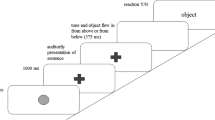Abstract
The purpose of this study was to explore the relationship between level of cognitive development and the comprehension of complex sentences in children. Twenty males and 20 females at the preoperational and concrete operational levels of cognitive development who were attending regular first-, fourth-, and seventh-grade classes served as subjects. Four examples each of parallel and nonparallel function forms of center-embedded and right-branching sentences served as stimuli within an object-manipulation task. The sentences were also described in terms of those containing a reversed word order clause, a clause with a role change (nonparallel function), neither, or both. Preoperational children could interpret sentences containing neither reversed word order nor role change as well as concrete operational children. Concrete operational children providing identity and reversibility arguments during conservation tasks had a significantly higher accuracy rate on sentences containing either role change or reversed word order than preoperational children. Concrete operational children providing reversibility, identity, and compensation arguments had a significantly higher accuracy rate on sentences containing role change and both role change and reversed word order than any other group of children. Preoperational children were noted to rely heavily on the use of word-order strategy to decode the sentences. Reliance on this strategy decreased as cognitive level advanced.
Similar content being viewed by others
References
Bever, T. G. (1970). The cognitive basis for linguistic structures. In J. Hayes (Ed.),Cognition and the development of language. New York: Wiley.
Chapman, R. (1978). Comprehension strategies in children. In J. Kavanagh & P. Strange (Ed.),Language and speech in the laboratory, school, and clinic. Cambridge, Massachusetts, MIT Press.
Chapman, R., & Miller, J. (1975). Word order in early two and three word utterances: Does production precede comprehension?Journal of Speech and Hearing Research, 18, 355–371.
Corrigan, R. (1978). Language development as related to stage 6 object permanance development.Journal of Child Language, 5, 173–190.
Cromer, R. F. (1980). Children are nice to understand: Surface structure clues for the recovery of a deep structure.British Journal of Psychology, 6, 397–408.
DeVilliers, J., Flusberg, H. B. T., Hakuta, K., & Cohen, M. (1979). Children's comprehension of relative clauses.Journal of Psycholinguistic Research, 8, 499–518.
Ferriero, E., & Sinclair J. (1971). Temporal relationships in language.International Journal of Psychology, 6, 39–47.
Folger, M. & Leonard L. (1978). Language and sensorimotor development during the early period of referential speech.Journal of Speech Hearing Research, 21, 519–527.
Ginsburg, H., & Opper, S. (1969).Piaget's theory of intellectual development. Englewood Cliffs, New Jersey: Prentice-Hall.
Goodson, B. D. & Greenfield, P. M. (1974) The search for structural principles in children's manipulative play: A parallel with linguistic development.Child Development, 46, 734–746.
Greenfield, P. M., Nelson, K., & Saltzman, E. (1972). The development of rule bound strategies for manipulating seriated cups: A parallel between action and grammar.Cognitive Psychology, 3, 291–310.
Greenfield, P. M., & Schneider, L. (1977). Building a tree structure: The development of hierarchecal complexity and interrupted strategies in children's construction activity.Developmental Psychology, 13, 299–313.
Hakes, D. T. (1980).The development of metalinguistic abilities in children. New York: Springer-Verlag.
Lahey, M. The role of prosody and syntactic markers in children's comprehension of spoken sentences.Journal of Speech and Hearing Research, 1974,17, 656–658.
Miller, J., Chapman, R. S., Branston, M. B., & Reichle, J. (1980). Language comprehension in sensorimotor stages V and VI.Journal of Speech Hearing Research, 23, 284–312.
Sheldon, A. (1974). The role of parallel function in the acquistition of relative clauses in English.Journal of Verbal Learning and Verbal Behavior, 13, 272–281.
Sheppard, J. L. (1978). Verbal analogies and concrete operation.Australian Journal of Education, 19, 26–37.
Sinclair, H. (1976, March 30).Comprehension of linguistic structures and their acquisition in different languages. Paper presented at Barnard College, New York.
Smith, J. W. A. (1976). Children's comprehension of metaphor: A Piagetian interpretation.Language and Speech, 19, 236–243.
Strohner, H., & Nelson, K. (1974). The young child's development of sentence comprehension: Influence of event probability, non-verbal context, syntactic form and strategies.Child Development, 45, 567–576.
Turner, E. A., & Rommetviet, R. (1967). The acquisition of sentence, voice and reversibility.Child Development, 38, 649–660.
Author information
Authors and Affiliations
Rights and permissions
About this article
Cite this article
abrahamsen, E.P., Rigrodsky, S. Comprehension of complex sentences in children at three levels of cognitive development. J Psycholinguist Res 13, 333–350 (1984). https://doi.org/10.1007/BF01068150
Accepted:
Issue Date:
DOI: https://doi.org/10.1007/BF01068150




